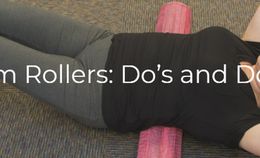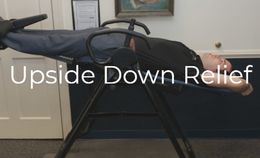Back Pain - Definition, Symptoms, Treatment
What is Back Pain?
Most people will experience back pain at some point in their lives. For some, it is relatively infrequent and may not be a big deal. However, for others, the pain can become chronic, occurring frequently or even constantly to a debilitating effect.
Back pain can range from a dull ache to more intense sensations of throbbing or burning pain. It is common to experience back pain anywhere along the spine. Types of back pain include low, mid and upper back, as well as related pain in the neck and shoulders. Sciatica, which results in pain in the low back and legs, is also common.
There is not just one cause of back pain. The majority of back pain stems from musculoskeletal imbalance; but people can experience pain for a variety of reasons, including physical strain, nerve damage, gut disorders, inflammation, muscle tension, stress, illness and injury or structural damage to the spine. Unaddressed emotional pain or trauma may be a significant component of back pain. Many cases of back pain may not have a cause that is immediately evident.
Treating back pain holistically starts with exploring the various factors that could be causing your pain. Pain that doesn't have an obvious cause (like an acute back injury) can often be a signal that there is an imbalance in your life that is straining your body. Healing back pain may involve physically adjusting your spine or hips, strengthening muscle groups in your body, treating underlying health conditions, or working to lower your stress level and addressing your emotional wounds.
How can you find a solution to such a potentially complex problem? "You need to be your own best advocate," says Jeffrey Haggquist, DO, an osteopathic physician who integrates sports medicine, pain recovery and physical therapy into his practice. "Most back-pain is multi-variant. The specialist you see might only have a limited knowledge about additional therapies that may help you. Educate yourself, and be in charge of finding the right healing recipe for you, with professional guidance."
What are the symptoms of back pain?
Back pain is a broad term that covers a wide range of specific symptoms. The actual level of pain can range from mild to crippling. The pain can also present in a variety of ways; depending on the cause, it may be described using terms like dull, sharp, throbbing or burning.
Back pain can be either acute or chronic. Acute back pain is often the result of muscle strain, significant physical or psychological stress or tension, or a minor injury, and may only last for a few days. It may be uncomfortable, but should go away on its own and probably doesn't require any major treatment effort.
Chronic back pain can result from more serious injury or damage to your spine, chronic stress, emotional trauma or other ongoing condition. While symptoms of chronic back pain may vary in their level of intensity, they typically won't go away completely on their own. However, people with chronic back pain can find relief by seeking treatment and making supportive lifestyle changes.
In addition to the pain itself, people who struggle with chronic back pain may experience depression and anxiety, as their condition can seriously interfere with quality of life. People who treat back pain with opioid or other narcotic medications are also at risk for addiction.
What causes back pain?
While a majority of back pain stems from musculoskeletal imbalances, back pain can be caused by a number of different factors (or several factors in conjunction). These differ from person to person, and can include:
Physical
Back pain can be the result of physical problems, like structural damage or misalignment of the spine. This can be the result of a single, acute injury, an illness, aging, or chronic wear and tear caused by the strain of everyday life. The damage can be mild - what a chiropractor would call a subluxation - or more severe, like degenerative disc disease.
Discs are thin layers of cartilage that provide padding between the bones of your spine. Bulging or ruptured discs are often a cause of back pain, and discs can slowly break down as a natural part of the aging process. However, some people with a disc problem experience no symptoms.
Your back needs to be active in order to stay healthy, but not too active. People who are largely sedentary, as well as people who work highly physical jobs or exercise a great deal, are at greater risk for developing back pain. Both extremes can strain the back considerably.
"We are sitting too much! says Jeffrey Haggquist. "Sitting for long periods of time can lead to lower crossed syndrome, a condition in which your hip flexors and lower back muscles become too tight and your core and gluteal muscles are weakened. You'll need to shift your balance of physical activity, get up out of your chair, and re-engage appropriate muscles to help your pain improve."
Arthritis, scoliosis, and osteoporosis can also lead to back pain. Poor posture plays a big role for some. People who are obese often develop back pain, as the spine can struggle to carry excess weight. In addition, if your muscles(especially your core muscles) aren't strong enough to help support your torso, your back muscles and spine have to work harder to do so.
Chronic inflammation can be a variable in back pain. Inflammation is a natural part of your body's immune response that can both heal and injure tissue. When it lasts for a long time, it can contribute to back pain (among other health problems) by irritating muscles and nerves. Inflammation is often the result of digestive and gut health problems, which should be examined as a possible cause of back pain. A diet heavy in processed foods and sugar is typically a major cause of inflammation.
Long-term pain also changes the way your brain experiences pain. In short, if you experience chronic pain, your brain may produce more of the neurotransmitters that cause sensations of pain. This means you may feel pain more intensely than before.
Genetic
Some kinds of back pain may be inherited. Research suggests that both degenerative disc disease and the likelihood of developing a herniated disc have genetic components. People with a close relative who struggles with back pain are more likely to have back problems themselves, and to experience symptoms of back pain more strongly.
Emotional
The back is intimately connected to our emotional selves. The spine is part of the central nervous system, and it links the brain to the gut, where many emotions are experienced. Many practitioners believe that painful emotions or trauma can get stuck in the body and that back pain can be a result.
Dr. John Sarno, a prominent back pain expert during the late 20th century, taught that back pain was largely the result of emotional pain. He believed that many people live with hurt, anger, rage or other deeply uncomfortable emotions that they don't feel safe acknowledging. As a way of distracting themselves from those feelings, they unconsciously develop back pain to occupy their attention instead. The pain is entirely real, but the injury is psychological.
Dr. Mel Pohl, writing in Psychology Today, states that he believes "that 80 percent of the experience of chronic pain is emotional." His point is that your relationship to your feelings plays a huge part in whether or not you experience chronic pain, and to what degree. This doesn't mean your back hurts any less, but that treating it requires a different approach.
Back pain and stress
Psychological stress can be a major cause of back pain. When you experience this stress, your body often physically tenses up. This means the muscles surrounding your spine tighten, putting additional pressure on your spine. If your stress is chronic, that pressure can really add up.
Back pain and depression, anxiety, and addiction
Back pain is linked to specific mental health conditions like depression, anxiety, and addiction. Living with chronic back pain can be incredibly frustrating. Many people experience significant limitations as a result of their pain - they hurt most or all of the time, and can't function the way they would like to. This can result in depression and anxiety, including a fear of the pain itself that tends to lead them to become even more focused on their pain, further amplifying the experience. In other words, the natural instinct to worry about the pain makes the pain worse.
People who use narcotic pain medication to relieve pain or try and function in spite of their pain are at significant risk for becoming addicted. This is both because misusing such medications can be physically and mentally addictive, and because the allure of having some way of managing and controlling the pain (and the anxiety that comes with it) can be very hard to resist.
Environmental
Mercury has been specifically linked to back pain. Mercury - a heavy metal that is used in dental fillings, thermometers, and fluorescent light bulbs - is extremely toxic. Exposure to even small amounts can be enough to cause damage to your health. Check with your holistic practitioner to assess and treat, if needed.
How do you heal back pain?
Acute back pain may well go away on its own. However, if the pain sticks around, or becomes a regular experience, it's a good idea to get help. Treating and healing chronic back pain may involve addressing several factors, including:
Assessment
Pain is a personal experience. There is no test to determine how much pain you are feeling - you know it, and no one else really can. However, a physician or chiropractor can examine your spine for injury, structural or mechanical issues, or other factors that may help indicate the cause of your back pain. Imaging may be helpful as well.
If you are experiencing chronic back pain, a mental health professional who specializes in working with back pain or a holistic doctor can also help assess whether your emotional health may be a factor.
Lifestyle
Lifestyle changes can help relieve both acute and chronic back pain. These can include:
Exercise
Being sedentary is associated with developing back pain. By contrast, exercise releases feel-good endorphins, helps your body relax and can strengthen the muscles that support your spine. Yoga and swimming are two forms of exercise that have been found to be particularly effective in relieving back pain and building up your body; yoga can also help you improve your posture.
If you're not up for more vigorous forms of exercise, a walk can be beneficial. Movement, in general, is also important. If you sit a lot during the day, make an effort to stand up and move around at least once or twice every hour.
Sleep
If you don't get enough sleep, you usually feel more stressed, and stress can lead to back pain. A good nights sleep can help your body feel more at ease, and also helps reduce inflammation and tension. This can help decrease your pain.
Meditation and mind-body techniques
Meditation is one way to develop a healthier relationship with your emotions. A meditation practice can help you become less afraid of your feelings (and your back pain itself), and more comfortable just letting them be. This can help relieve the emotional factors that may be causing your pain, as well as help you feel more at ease even when you are experiencing pain.
Nutrition
Eating the right foods can help relieve back pain related to inflammation. Supplements can also help support your back and reduce your symptoms. A holistic physician can help give you specific guidance in this area.
Diet
Certain foods promote inflammation and should be avoided. These include:
- Processed food
- Junk food
- Sugar, corn syrup and artificial sweeteners
- Grains (especially gluten)
- Dairy
- Vegetable oils
If you're wondering whether your diet really affects your back pain, experts recommend trying an elimination diet (cutting all of the above foods out of your diet) for several weeks, and seeing if you notice a difference.
Other foods can reduce inflammation, strengthen your muscles and bones and support your overall health. Healthy foods for someone with back pain include:
- Greens
- Healthy fats like coconut oil, olive oil, and avocado
- Omega-3 fatty acids: grass-fed/lean proteins or legumes
- Fruits
- Probiotic-rich foods like kefir or sauerkraut to support your gut
In addition, staying well hydrated is recommended.
Supplements
Ginger, curcumin (found in turmeric), omega-3 fatty acids and magnesium are among the supplements that can help reduce back pain. You can also cook with ginger and turmeric as well as take them in capsule form.
Medical cannabis can also be useful for relieving back pain and reducing inflammation. This can be a safer alternative to other forms of medication commonly used to treat back pain, and can also help with sleep. One form of cannabis, CBD oil, has been found to help with back pain without producing the psychoactive effects that most cannabis is known for.
Healing modalities: who should I go see?
Because back pain can have so many causes, there are a great number of health professionals who can help with one aspect of back pain or another. A holistic physician can help assess you and provide treatment if your pain is structural or injury-related. Osteopathic physicians often have particular expertise in this area, especially those with a particular focus on pain recovery.
A physician can also make sure your back pain isn't a sign of something more serious, and explore whether other health conditions may be a causal factor.
Chiropractors are a great resource for back pain. Chiropractic is a school of medicine centered on the musculoskeletal system, and chiropractors can also assess and diagnose any spinal conditions you may be dealing with. Many chiropractors, especially those trained in network spinal analysis, are also equipped to address the emotional aspects of back pain.
Bodywork practitioners like massage therapists, acupuncturists, Rolfers and others who work with stress and tension in the body can also be very helpful.
If your back pain is rooted in emotional hurt or conflict, a therapist or counselor who specializes in back pain can be a great help. Specific types of therapy that have been found to be effective for working with back pain include Cognitive-Behavioral Therapy (CBT), Mindfulness-Based Stress Reduction (MBSR), Emotional Awareness and Expression Therapy (EAET), and Emotional Freedom Techniques (EFT), a form of psychological acupressure that you can do at home. A certified EFT practitioner can give you personalized instruction, and how-to manuals or videos are also widely available online. Read more about holistic therapies for back pain.
References:
The National Institute of Arthritis and Musculoskeletal and Skin Diseases: Back Pain
National Institutes of Health
The Psychology of Low Back Pain
Srini Pillay, MD | Harvard Medical School, 2016
The Claim: Back Pain Runs in Families
Anahad O'Connor | New York Times, 2011
Chronic Pain: It Is All in Your Head, and It's Real
Mel Pohl M.D., FASAM | Psychology Today, 2013
The Best Swimming Workouts for Low Back Pain
Sean McCance, MD | Medium, 2016
16 Poses to Ease Back Pain
Andrea Ferretti | Yoga Journal, 2015
Selected Studies:
The Effects of a Novel Psychological Attribution and Emotional Awareness and Expression Therapy for Chronic Musculoskeletal Pain: A Preliminary, Uncontrolled Trial
AJ Burger, et al | Journal of Psychosomatic Research, 2016





















